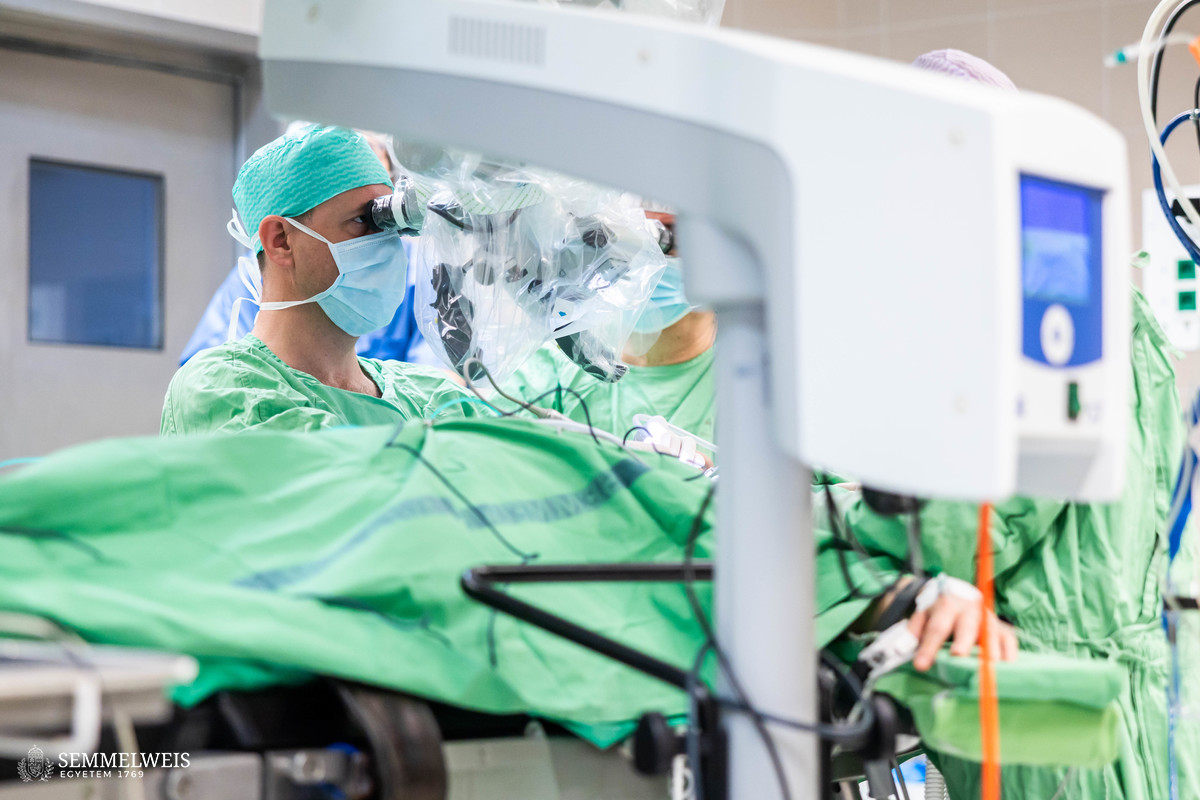
Innovations in Hearing Restoration: Robot-Assisted Cochlear Implants at Semmelweis University
Recent developments at Semmelweis University in Hungary showcase significant progress in the field of otorhinolaryngology, particularly in hearing restoration techniques. The university, renowned for its medical research and education, has successfully performed robot-assisted cochlear implant surgeries, marking a new era in precision medicine and surgical technology. This breakthrough not only underscores the university’s commitment to advancing healthcare but also emphasizes Hungary’s position as a leader in innovative surgical procedures.
Semmelweis University’s Role in Hungary’s Medical Innovation
Located in Budapest, Semmelweis University has a storied history of pioneering medical procedures. The university’s Department of Otorhinolaryngology, Head and Neck Surgery specializes in ear, nose, and throat surgeries, with a focus on hearing impairment treatments. Since the first cochlear implant was performed in Hungary in 1985 thanks to the efforts of the department, the institution has continued to push the boundaries of medical science. Today, the integration of robotic technology in ear surgeries represents the latest step forward.
Understanding Robot-Assisted Ear Surgeries and Cochlear Implants
Hearing loss affects millions globally, including many in Hungary. Cochlear implants are intricate electronic devices that replace damaged hair cells in the inner ear, enabling auditory signals to reach the brain. The procedure involves implanting a receiver unit behind the ear and inserting a slender electrode into the cochlea, a process demanding exceptional precision. Performing this delicate operation manually poses challenges such as potential damage to the inner ear structures.
Robot-assisted surgery addresses these challenges by employing advanced robotic systems, such as the RobOtol ear surgery robot utilized at Semmelweis University. These systems assist surgeons in inserting electrodes slowly and accurately, significantly reducing risks to the inner ear’s delicate hair cells and preserving residual hearing.
Advantages of Robot-Assisted Cochlear Implant Surgery
Implementing robotic technology in cochlear implant procedures offers several benefits:
- Enhanced Precision: Robots provide ultra-fine control during electrode insertion, minimizing trauma.
- Improved Preservation of Hearing: Precise insertion preserves existing hair cells, which is crucial for better hearing outcomes.
- Reduced Surgery Time: Robotics streamline the procedure, potentially shortening operative times.
- Consistency and Reproducibility: Robotic systems reduce variability, ensuring standardized results across cases.
Clinical Outcomes and Future Perspectives
The recent robot-assisted surgeries at Semmelweis University were successful, with all patients scheduled for follow-up rehabilitation. Early results are promising, showing that patients can expect improved hearing capabilities thanks to this technological advancement. The hospital’s multidisciplinary approach—combining technological expertise with audiological and speech therapy—maximizes patient outcomes.
Dr. László Tamás, director of the Department of Otorhinolaryngology, highlighted that these procedures are particularly beneficial for children diagnosed early with hearing impairments. Early cochlear implantation, ideally between ages one and two, combined with robotic precision, can significantly enhance speech development and integration into mainstream education.
Training and Development at Semmelweis University
In addition to performing surgeries, Semmelweis University actively participates in training surgeons in robotic ear surgery techniques. The department has hosted cadaveric courses and aims to develop international training programs, sharing expertise with global counterparts. Such initiatives contribute to the continuous evolution of otologic surgery and ensure that Hungary remains at the forefront of hearing loss treatments.
The Significance for Patients and Medical Community
For patients, especially children, early intervention is critical for optimal speech and language development. The university’s adoption of robot-assisted surgery underscores its dedication to offering minimally invasive, state-of-the-art options that improve quality of life. For the Hungarian healthcare system, integrating robotics signifies a step towards modernizing surgical practices, attracting international collaboration, and expanding the country’s reputation for excellence in medical education and research.
How to Access Advanced Hearing Restoration Treatments
If you or your loved ones are experiencing hearing issues, understanding the available options is vital. Semmelweis University provides advanced diagnostic and surgical interventions, including cutting-edge cochlear implant procedures. Early diagnosis through newborn hearing screening programs allows timely intervention, which is essential for successful hearing restoration.
Interested individuals should consult specialized audiologists and ENT surgeons. The university offers comprehensive care, from initial assessment to postoperative rehabilitation, supported by multidisciplinary teams. To learn more about the university’s programs or to schedule an appointment, visit their official website or contact the medical departments directly.
Conclusion
Semmelweis University’s successful implementation of robot-assisted ear surgeries marks a significant milestone in Hungary’s medical landscape. By combining technological innovation with clinical expertise, the university enhances treatment efficacy and patient safety in cochlear implantation. As robotic surgeries become more commonplace, they promise to redefine standards of care for individuals with hearing impairments, fostering a future where hearing restoration is safer, more precise, and increasingly accessible.
Explore educational and professional opportunities at Semmelweis University if you are interested in contributing to medical innovation. Stay informed about the latest advancements by following their official channels and research publications.

